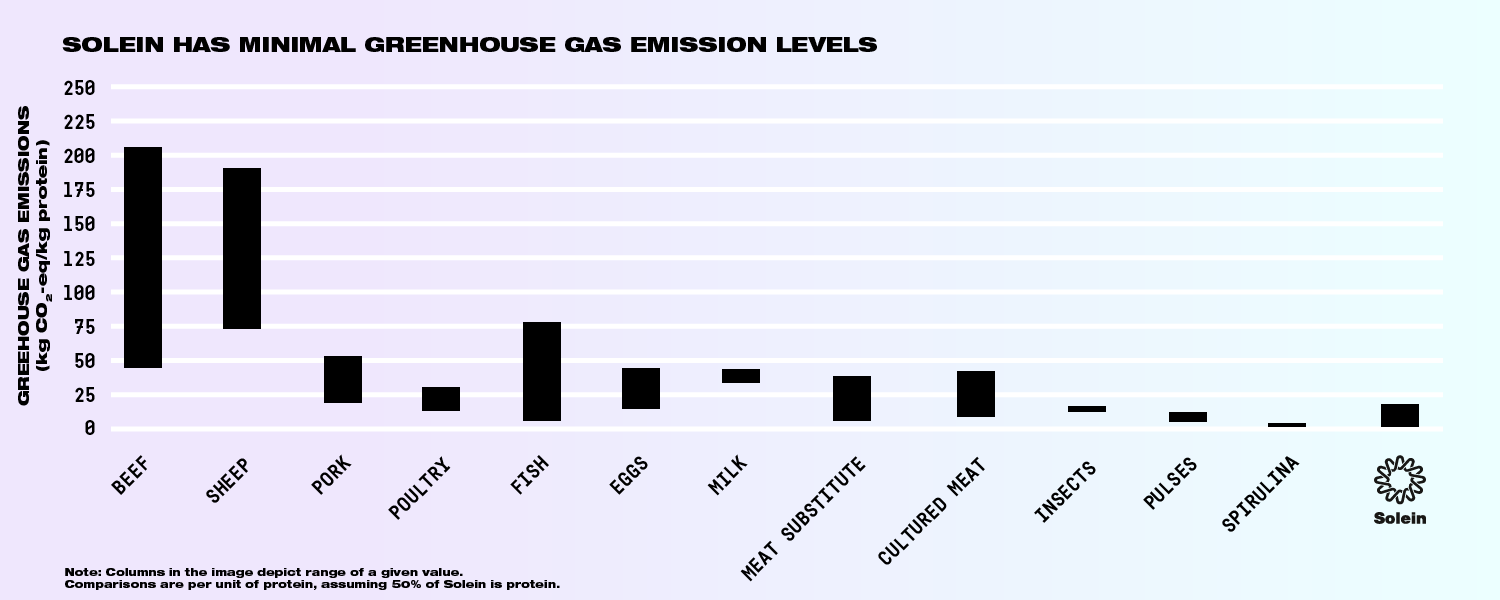Global food production emissions find remedy in solein – the world’s purest protein

Written by:
Hanna Tuomisto
Associate Professor, Helsinki Institute of Sustainability Science (HELSUS)
As concerns around the sustainability of conventional agriculture intensify, Hanna Tuomisto, Associate Professor at the University of Helsinki explains how single-cell protein provides an environmentally friendly alternative to livestock farming.
Agricultural activity releases massive quantities of pollution – it is estimated that livestock farming accounts for about 15% of the man-made greenhouse gas emissions that cause climate change, a higher percentage of emissions than that created by global transport activity.
Coupled with global population growth, this means the environmental impact of food production will almost double by 2050 unless meat consumption can be reduced.
Then there is the impact on biodiversity. Approximately one third of the planet’s ice-free land is already taken up by agriculture, of which 80% is used by livestock farming, and we don’t yet fully understand the damage caused by reducing the variety of plant and animal life in the world.
This is a particular concern because to sustain current levels of demand for meat production without implementing changes in the production practices, every wooded area on the planet would have to be removed over the next 30 years and these trees play a vital role as a carbon stock.
One of the reasons why meat has become so important to our diets is that it is an excellent source of high quality protein. Solein – the protein produced by Solar Foods – also contains all the essential amino acids, but because it is produced using carbon dioxide and electricity it does not require large amounts of land to produce.
Another unique characteristic of Solein is that it is able to take carbon directly from carbon dioxide without needing a source of sugar. Other processes that utilise microbes for protein production, for example egg albumen or milk protein, require agricultural land for producing the carbon source.
At the university’s Helsinki Institute of Sustainability Science (HELSUS), we have been researching the environmental impacts of a single-cell protein product consisting of hydrogen-oxidising bacteria. Once this analysis has been completed the findings will be published in a scientific peer review journal.
One of the initial findings of this research was that the minimum greenhouse gas emission level per kg of protein produced by Solar Foods was 0.4kg CO2, compared to 45kg for beef and 80kg for lamb.


The production process for Solein offers the potential to reduce demand for meat and therefore emissions from livestock production when consumption of Solein directly replaces meat consumption and reduce the pressure for converting forests to agricultural land. The production process for Solein also uses very little water and the modest amounts of water used can be cleaned thoroughly before being released back into the environment.

Another very important factor to consider when assessing the benefits of Solein is the impact of climate change on conventional agriculture.
The agricultural industry is already facing problems relating to the planet becoming drier and hotter as well as the impact of other extreme weather events such as very heavy rains. Drought has long been an issue in parts of Africa such as Ethiopia, but in recent years we have experienced long dry periods and very heavy rainfall during consecutive summers even here in Finland, which have resulted in considerable crop losses.
In conclusion, conventional farming will become increasingly challenging. This underlines the potential of indoor production systems such as that developed by Solar Foods that are not weather dependent.
*Source of Figures: University of Helsinki, Tuomisto, H.L., Ellis, M.J., Haastrup, P., 2014. Environmental impacts of cultured meat: alternative production scenarios. Proceedings of the 9th International Conference on Life Cycle Assessment in the Agri-Food Sector. Water Footprint Network.

